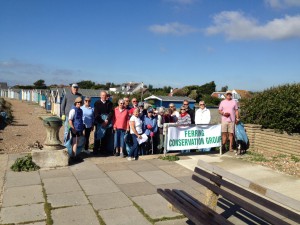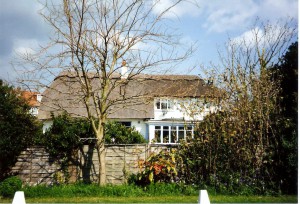Stuart Card a Conservationist and Qualified Bird Ringer from Warnham Local Nature Reserve (Warnham LNR) opened our July meeting with a fascinating and informative talk about the ‘Captive Breeding and Re-introduction Programme of Harvest Mice’ at Chesworth Farm, Horsham. To our delight and to give our members the perfect photo opportunity Stuart brought along a breeding tank complete with several beautiful harvest mice.
Harvest Mice are Britain’s smallest mammal and weigh between 4 to 6 grams and are only between 50 to 70 mm long. They are the only British mammal to have a prehensile tail which enables them to be incredibly acrobatic. Harvest Mice have many predators including stoats, mink, weasels, foxes, sparrow hawks, barn owls, crows, pheasants and domestic cats.
This breeding programme was established in 2008 when it was realised that Harvest Mice were at risk due to modern farming methods, alterations in sowing practices, pesticides failing to control invasive grasses and climate change creating wet seasons. Harvest Mice cannot warm themselves once their coats are damp. Supported by Friends of Warnham LNR and Horsham DC the programme runs across 4 sites and involves 3 different Public Organisations and 1 private collector.
Harvest mice can breed before they are 1 year old and can produce 3 to 7 litters a year. Their mating season is between May and October. The gestation period is 19 days and litters can range from 1 to 8 young.
Breeding tanks are set up using sawdust, meadow hay, millet sprays for climbing and Finch Wicker baskets to offer additional nesting sites to help emulate a natural environment. Wild bird seed mix and fruit pieces are provided as food sources.
The breeding procedure always starts with 2 males and 2 females in one tank; the dominant female will conceive first. When this occurs the subordinate female is immediately removed. As soon as the subordinate male is identified he must also be removed. The successful breeding pair can be kept together for up to 7 litters. If they have any more than this, the female may die giving birth.
After a break for tea Tricia Hall updated us on the walk on Highdown Hill that took place on 2nd July. Among other species the Yellow Rattle flower was in evidence. This annual plant thrives in grasslands and as its name suggests if you brushed past it in the height of summer you will hear the tiny seeds rattle in their pods. Some excellent photos were taken of the Marble White butterflies as they were nectaring. Tricia brought to our attention that the vegetation had been cut back along the banks of the River Rife leaving only about 10 per cent for wildlife activity.
Ed Miller updated our members with the news that the HM Planning Inspector had asked for the Arun DC Local Plan to be revised to include an extra 180 houses to be built per year over the next 15 years. If an acceptable proposal is not forthcoming then the Local Plan will be rejected and Arun DC will have to start again from scratch. This will leave the door open for developers to pursue planning applications on other sites in the area.
Ed then concluded by announcing that our Group Secretary, Carol Dyball, was stepping down from committee duties after 15 years to concentrate on her move away from Ferring. Ed thanked Carol for all her hard work over the years and wished her the very best in her forthcoming move.



